For decades, homosexuals and other LGBTQ minorities were ignored when commemorating those who were persecuted and murdered. But those days are gone.
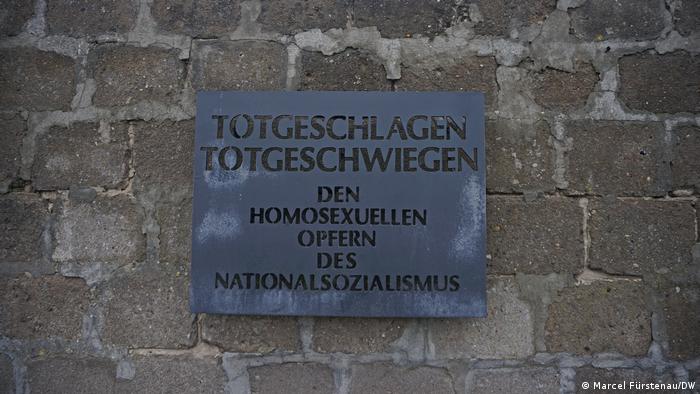
A memorial plaque was attached to a wall of the former Sachsenhausen concentration camp in 1990
“Now you gay sow are rid of your balls.” With these words, Otto Giering was mocked by a warden in August 1939 after his forced castration in Sachsenhausen concentration camp. Even before his deportation to the concentration camp, the 22-year-old had been sentenced twice for having homosexual contacts and sent to a labor camp.
The harrowing story of the journeyman tailor from Hamburg can be read in the book “Medicine and Crime”. The publisher is the Brandenburg Memorials Foundation, which includes the concentration camp memorial and the Sachsenhausen Museum.
Concentration camp victim Otto Giering was never compensated
Otto Giering survived the ordeal, but his health was in ruins: “Due to the concentration camp imprisonment, he had heart problems, stomach problems, suffered from headaches and migraines. While he was submitting the application for compensation, the traumatic experiences from the concentration camp came up again. When After receiving the rejection of the compensation claim, he did not come home for days and was reported missing. The police found him confused and disoriented.”
Otto Giering died a few months before his 60th birthday in 1976. He was one of an estimated 10,000 to 15,000 gay men who were deported to German concentration camps by the end of the Nazi era in 1945. In Sachsenhausen alone there were around 1,000, more than in any other concentration camp. Along with Jews, Sinti and Roma, they were the most exposed to abuse by the guards.
Often difficult working conditions for homosexuals
Men with the stigmatizing pink triangle on their prison uniforms were often sent to punitive squads with difficult working conditions. Among them was the so-called clinker factory – a subcamp of Sachsenhausen, where, among other things, armaments had to be manufactured. In 1942, 200 gays were systematically murdered at this place. In total, more than 600 homosexual prisoners died in the concentration camp north of Berlin.
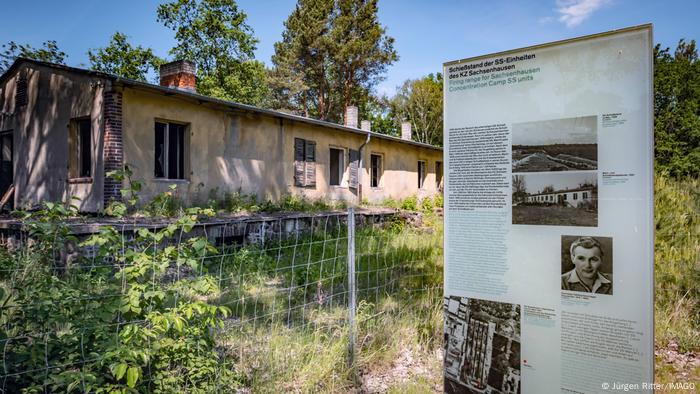
The clinker factory was a subcamp of the Sachsenhausen concentration camp (archive image from 2019)
Although the fate of gay men during the Nazi era has been documented thousands of times, nothing and no one reminded them of them for decades – at least publicly. A commemorative plaque for this group of victims was only placed in the Sachsenhausen Memorial after the fall of the Berlin Wall and the reunification of Germany in the early 1990s.
Pink ribbons from the West Berlin gay movement for concentration camp prisoners
The first attempts to commemorate the men who were persecuted as homosexuals in the Sachsenhausen concentration camp were made as early as the time of the division of Germany. Memorial spokesman Horst Seferens pointed this out to DW: members of the West Berlin gay movement laid wreaths with pink ribbons, which were immediately removed by the Ministry for State Security (Stasi).
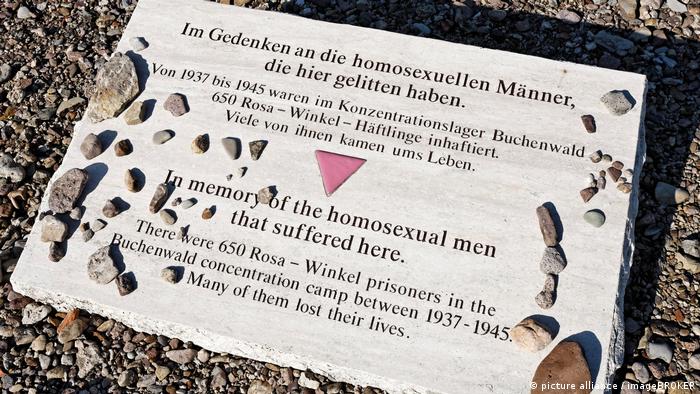
Homosexual victims are now also commemorated in the Buchenwald concentration camp memorial near Weimar
“Meanwhile, this group of victims, which has also been represented on the advisory board of our foundation since 1993, is represented in many ways in the exhibitions and in the other work of the memorial,” emphasizes Seferens. There are several reasons for the late start of official remembrance and moral rehabilitation: on the one hand, this has to do with the fact that practiced homosexuality was considered a criminal offense in both German states after 1945, although liberalization in the GDR started much earlier than in western Germany.
Other groups of victims took precedence for a long time
In addition, the focus was on certain groups of victims, Seferens points out the differences between East and West. “In the GDR, in line with the anti-fascist state doctrine, it was the political prisoners and in the Federal Republic it was the conservative resistance and later the Jewish persecutees.”
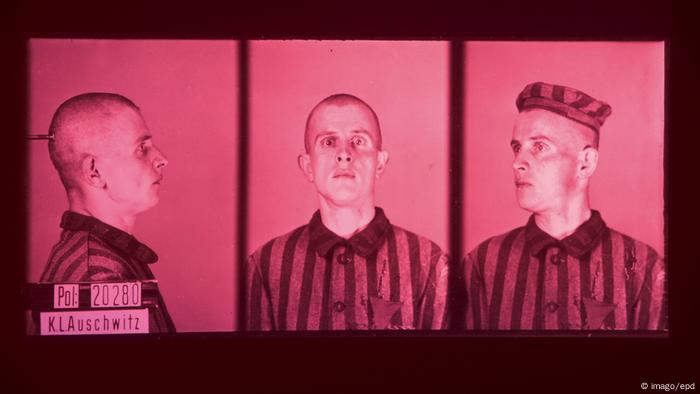
In 2015, the German Historical Museum and the Gay Museum in Berlin devoted themselves to the subject of homosexuality and also showed photos of prisoners in the Auschwitz extermination camp Homosexuals – excluded from commemoration and denied financial compensation. “This sheds light on the continuities of stigmatization and exclusion mechanisms that reach well beyond 1945,” Seferens summarizes the long period of silence and repression.
Paragraph 175 dates back to 1871
The roots of this social climate go back very far. Long before the National Socialists came to power in 1933, homosexual acts were punishable under Article 175 of the Reich Criminal Code of 1871, the year the first German Reich was founded. As part of the so-called “offences against morality”, among other things, “unnatural fornication” between men fell under these paragraphs.
In 1935, the Nazis massively tightened the penal regulations and introduced Paragraph 175a. This meant that not only “coitus-like acts” were forbidden, but all “lewd acts” between men. Lesbian women were also denounced because of their “deviant” sexuality and caught the eye of the police.
Lesbian love was only forbidden in Austria
However, they were largely spared criminal law because homosexual acts between women were not punishable in almost the entire German Reich. The situation was different only in Austria, which joined Nazi Germany in 1938 to the jubilation of large sections of the population and where there was no legal difference between male and female homosexuality.
Overall, the fate of lesbian concentration camp inmates has been much less researched than that of gay men, since there was no separate inmate category for them. That is why they were sent to concentration camps under various pretexts: as “asocial”, homeless, prostitutes or women who attracted attention with an “immoral lifestyle”.
Anti-Semitism, racism, homophobia
However, the pressure of persecution increased steadily, especially for men. After the Nazis had immediately closed all bars of the gay and lesbian subculture in 1933, they destroyed the Institute for Sexual Science in Berlin, founded by Magnus Hirschfeld in 1918, in the same year. Their anger was directed not only against a pioneer of the gay movement, but also against his Jewish faith. The Nazis lived everything out on Magnus Hirschfeld at once: anti-Semitism, racism and homophobia.
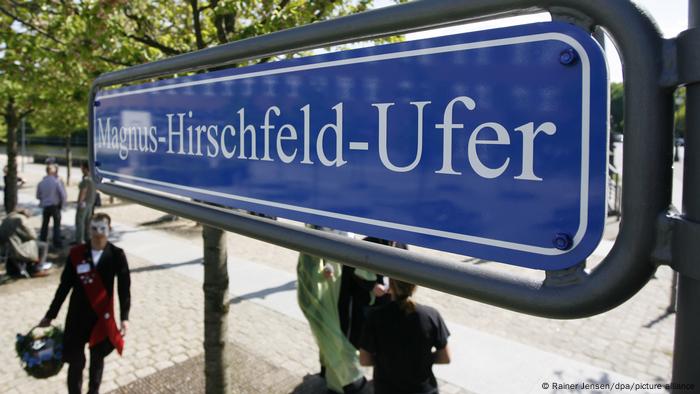
In Berlin's government district a riverside path was named after the sexologist Magnus Hirschfeld in 2008
In the year of the 1936 Summer Olympics in Berlin, the National Socialists founded the “Reich Center for Combating Homosexuality and Abortion”. Gays in particular were specifically targeted with the help of collected data. In this way, around 100,000 investigations were initiated and around 50,000 men convicted during the Nazi era.
Queer victims were not rehabilitated until 2002
When the Nazi terror ended, the tightened Paragraph 175 remained in force in both the Federal Republic and the GDR. It was not finally abolished until 1994, four years after reunification. It took until 2002 for the German Bundestag to rehabilitate those convicted by Nazi judges. Most of them had already died by then.
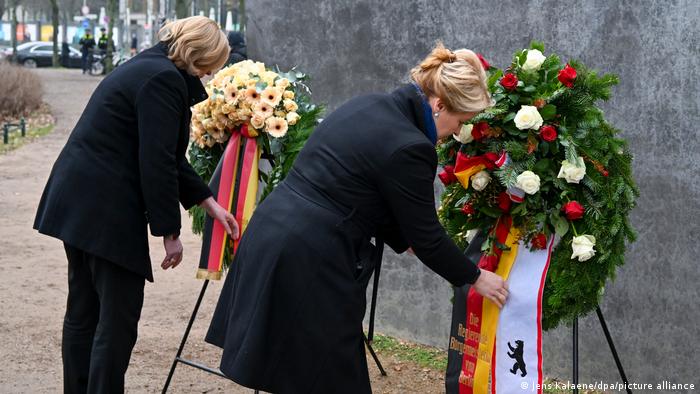
Bundestag President Bärbel Bas (left) and Berlin's Governing Mayor Franziska Giffey lay wreaths at the memorial for homosexual victims of National Socialism
When Parliament commemorates all victims of Nazi rule on January 27, 2023, the anniversary of the liberation of the Auschwitz death camp, it will focus on the victim group of the persecuted sexual minorities – 90 years after the start of their unprecedented discrimination, oppression, persecution and murder. A premiere as part of the commemoration that has been taking place in Parliament since 1996.
Cooperation with the Schwules Museum
In the Sachsenhausen Memorial on the site of the former concentration camp, a gay man spoke publicly for the first time in 1995 about the suffering of homosexuals – at the commemoration of the 50th anniversary of the liberation of the concentration camp. At the turn of the millennium, the memorial and the Schwules Museum Berlin jointly presented a large special exhibition on the same topic. Since 2008, a memorial in the heart of Berlin near the Bundestag has commemorated the homosexuals persecuted under National Socialism.
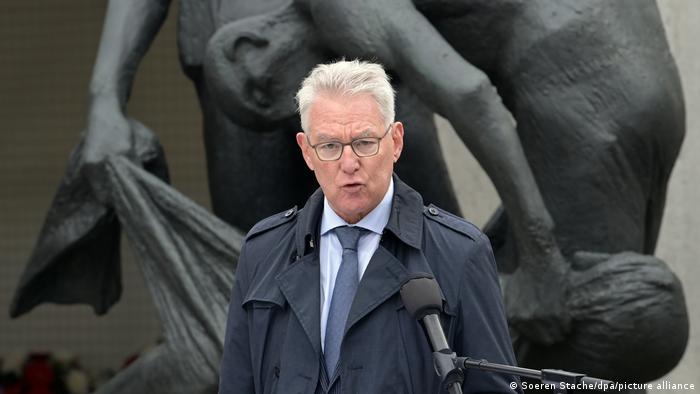 < p>Dik de Boef, concentration camp survivor and President of the International Sachsenhausen Committee
< p>Dik de Boef, concentration camp survivor and President of the International Sachsenhausen Committee
In September 2022, the President of the International Sachsenhausen Committee, Dik de Boef, commemorated the 80th anniversary of the murder campaign against gay prisoners in the concentration camp at that time: “Remembrance is not just a look back, it's not just about the past, it is also reflected in the present – i.e. also in the status and rights of gays and lesbians, the LGBTQAI+ community today.”